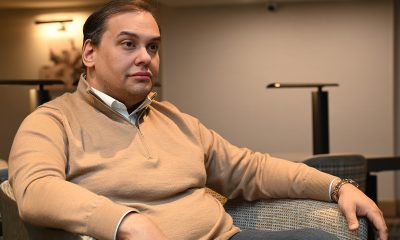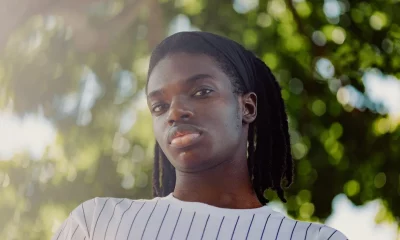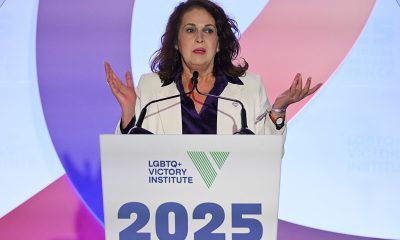a&e features
SPRING ARTS 2020: TV’s big paradigm shift and the queer consumer
Apple, Disney, others lock horns wth Netflix as streaming wars intensify — where will all the LGBTQ content land?
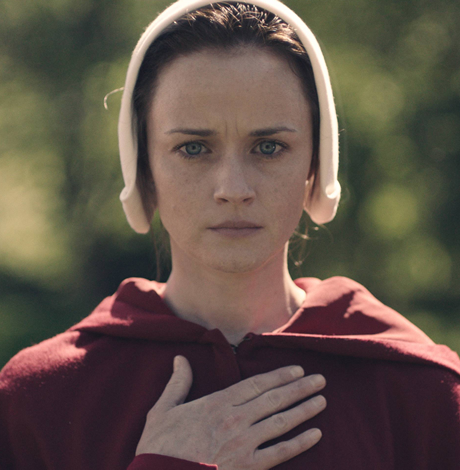
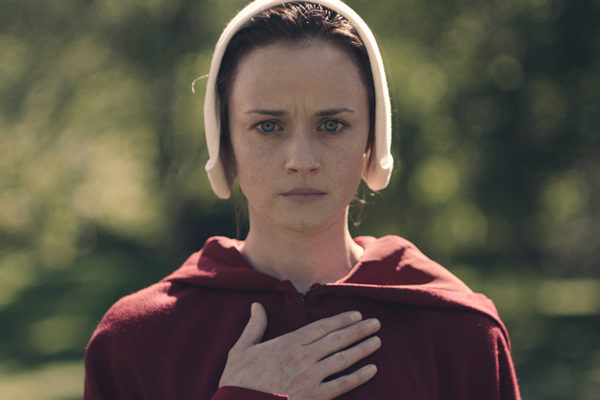
Streaming content — whether we’re talking about music or movies/TV — is, of course, nothing new. But on the movie/TV side, it’s ramping up to unprecedented levels.
The New York Times compares it to the great entertainment industry disruptions of yore — silent films going to “talkies” in the ’20s, TV in the ’50s and the double whammy of cable TV and VCRs in the ’80s, which radically shifted the way consumers viewed content.
Netflix started streaming movies and shows in 2007 and dominates the field with 166 million subscribers worldwide and a $12 billion budget for new content. Until now, the main old school media conglomerates — Disney, NBCUniversal and WarnerMedia — stayed out of it while Netflix (“Stranger Things,” “The Crown”), Amazon Prime Video (“The Marvelous Mrs. Maisel,” “Fleabag”) and Hulu (“The Handmaid’s Tale,” “Veronica Mars”) battled it out.
The old companies now realize they’ll have to adapt to survive. Disney Plus launched Nov. 12 for $6.99 a month offering content from Disney, Pixar, the “Star Wars” franchise, Marvel movies, reruns of “The Simpsons” and about 7,500 episodes of old Disney shows. WarnerMedia will launch HBO Max for $14.99 per month in May with 10,000 hours of available content such as “Friends,” “South Park, old Warner Bros. movies, CNN documentaries, “Sesame Street” and more. And Peacock, NBCUniversal’s imprint, will boast 15,000 hours of available content including reruns of “The Office,” “Frasier,” “Saturday Night Live,” Universal movies, a reboot of “Battlestar Galactica” and gobs more. It’s slated for an April 15 rollout.
Others are taking the can’t-beat-‘em-join-‘em approach. FX on Hulu launched March 2 boasting its shows such as “Mrs. America,” “Better Things,” “Dave” and “Fargo” now available there. And Quibi, set to launch April 6, is focusing on short-form mobile video. Founder Jeffrey Katzenberg is said to have spent more than $1 billion for short-form episodes of shows like a Steven Spielberg horror series “Spielberg’s After Dark” and “Kill the Efrons,” a survival reality series starring Zac Efron and his brother.
Apple, of course, is no longer content to sit on the sidelines either. Apple TV Plus launched Nov. 1. That makes the likely big players Netflix, Amazon Prime Video, Hulu, Disney Plus, Apple TV Plus, HBO Max and Peacock, but that’s just for starters.
There are, according to the New York Times citing data from Parks Associates, 271 online video services in the U.S. some of the more obscure ones offering highly curated content. For every mainstream one, such as ESPN Plus or NFL Sunday Ticket for sports, there’s a bounty of niche options like Crunchyroll and Hidive for anime, Hi-Yah! for martial arts or GAIA for yoga-themed content.
Navigating the deluge
So much is now available, though, that consumers are overwhelmed. Although it’s changed some in recent years, one of the long-running complaints of cable TV or Dish satellite subscribers was having to pay for hundreds of channels they never watched. Well, now with streaming, the argument goes, they no longer have to. Just subscribe to the services you want.
But it’s not that simple. Say you subscribe to Netflix and Hulu but then everybody starts buzzing about “The Marvelous Mrs. Maisel” winning a bunch of Emmys and being must-see TV and you’re faced with major pop culture FOMO. And if you have cut your cable subscription, as 5.5 million did in 2019 alone, what do you do when there’s a major event like the Olympics, the Academy Awards or the Super Bowl that none of the streaming services have the rights to? (The presidential debates, for example, are easy to stream for free online.) And what if you have one of those deals where your phone, home internet and cable are all under one umbrella like Xfinity in the D.C. market and it’s not as easy to get out of?
At some point, viewers will have to make a choice, much as they did between VHS or Beta 30 in the ’80s, and not all the companies getting into the game will be successful as consumers are only willing to pay so much — $44 the Wall Street Journal reports citing its own polling — for about 3.6 streaming services (one in five plan to cut the cable cord within the year, the Journal reports).
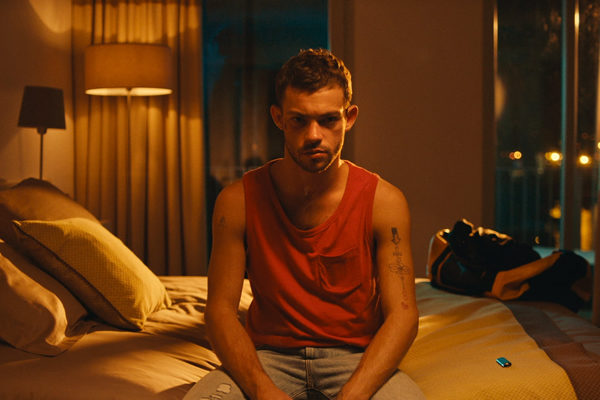
Gay entertainment writer/guru Greg Hernandez says it’s “a new frontier” for pop culture fans.
“There’s so much more content, the sky’s the limit,” he says. “And that’s why this seems unprecedented. It feels like the biggest beneficiaries are the consumers. They have so many choices now. They’re being courted with really quality content from all the top stars, the best actors are going for roles on shows that are being streamed, so I think the consumer is the biggest beneficiary. It’s nice to be courted and nice to have so much of the top talent flocking to this form.”
Cutting the cable cord?
For Matt Chun, a gay Washington man who early in his career worked at ABC, the current system is both a blessing and a curse.
“Digital and social media trends have changed just about everything in terms of the way we consume our content,” he says. “In some ways, we are more than ever in the driver’s seat with TV executives and music artists catering to our short attention spans, our schedules and our price points. In other ways, we’re spoiled brats imprisoned by our voracious appetites. And if not us, certainly the next generation of iPad-trained kids.”
Chun canceled cable about three years ago because it was simply cheaper to pay for streaming. He had Xfinity internet and cable and got tired of the hikes — it started at $75, jumped to $116, then $139 and he said, “Enough.” Similarly, his parents’ Xfinity bill in Philadelphia hiked from $150-187.
He now subscribes to AT&T TV, which comes with HBO GO, and Amazon Prime. The latter two are $63.60 per month (higher because they offer more of a hybrid experience with live TV and On Demand). Amazon Prime is $13 per month. He used to have Netflix but not currently.
And yes, he says there are times there’s something he wants to watch on another service.
“Often you’ll hear buzz about a show on social media but then realize it’s on the one you just cancelled,” he says. “For example right now, I’m curious about ‘The Circle’ on Netflix. There was a time that I would switch my services on and off, chasing the premiere of shows such as ‘Game of Thrones’ on HBO or the return of ‘Love’ on Netflix. But now there are just so many good shows that I just end up choosing one that I’m interested in on one of the services I have.”
There are ways around the dilemma, too.
“If there’s a show I really want to watch and don’t have paid access to, I can often find a streaming site — likely illegal — to binge watch it. Sometimes the quality suffers or the streaming lags, but it’s good enough. Or I’ll binge watch in spurts when I’m at my friend’s house who has different streaming options. It seems like I’m never without options … and someone is always entering the market with lower costs.”
“People share passwords with friends,” Hernandez says. “There are ways to see what you want to see.”
Kenya Hutton, another gay Washington TV fan, subscribes to Netflix, Hulu and Amazon Prime in addition to his $165 monthly Xfinity bill, which he plans to keep. He says despite all that, there’s still a dearth of representation.
“It would be great to see more quality LGBTQ programming from people of color,” Hutton says.
Where are all the queer shows?
There’s voluminous queer content on the major platforms. Four years ago, GLAAD started gathering data on streaming original series for its annual “Where We Are on TV” survey and the numbers have mostly gone up every year since then.
For the most recent survey, released last November, GLAAD found 109 regular LGBT characters on original scripted series on Amazon, Hulu and Netflix, the three platforms it monitors. That was an increase of 34 from last year’s tally. There are also 44 recurring LGBT characters, up from just seven the previous year.
Gay male characters make up 42 percent, lesbians 30 percent, 14 percent bi women and nine percent bi men. The one dip was in trans characters at seven percent, down four percentage points from the previous year. That’s likely a hiccup, GLAAD’s Megan Townsend, lead author of the report, says as shows such as “Transparent” and “Orange is the New Black” have ended and some shows she knows of in development with trans characters haven’t yet launched.
“I think maybe that was just a one-off year,” Townsend, who’s bi, says. “The bigger problem will be if this becomes a trend.”
The 109 LGBTQ characters on the streaming platforms compares to 90 on scripted shows on broadcast TV networks (ABC, CBS, NBC, FOX and The CW) and 121 on scripted primetime cable shows. So while it’s not as if there’s a deluge of LGBTQ characters and storylines on the streaming shows, it’s right up there in the same league as the network and cable shows. Some might even argue it’s a tad underwhelming when you consider streaming has unlimited volume potential whereas network and cable have limited daytime/prime time hours to program.
Of Amazon, Hulu and Netflix, Netflix had the most LGBTQ characters as has been the case every year streaming has been included in the GLAAD survey. So if queer representation on original streaming shows is your main interest, Netflix, home to “Grace and Frankie,” “Tales of the City” and the new RuPaul series “AJ and the Queen,” not to mention reality juggernaut “Queer Eye” (not counted in the GLAAD report) is your best bet.
So how did Netflix end up being the industry leader and also the best at LGBTQ representation? Brian Wright, Netflix’s vice president of original series: young adults/family, says the GLAAD report and other industry report cards are important, but the representation just happened on its own.
“I’m happy to report that it all truly comes out of an organic process,” Wright, who’s gay, says. “It’s about finding incredible storytellers and letting them do their best work. There’s no additional layer of, ‘Well, can you make this person this or that person that?’ We don’t have to do that because it’s already there in the storytelling, in the fabric of these shows. I would say that this great result we’re seeing with GLAAD is just a result of us attracting incredible talent to reflect the world back to the world.”
Wright has been with Netflix for six years and says there’s strong queer representation among its employees. Comparable, he says, to what he experienced at previous jobs with Viacom, Disney and Lifetime — “I’ve bounced around the Hollywood gauntlet,” he says. He oversees shows such as “Stranger Things,” “13 Reasons Why,” “Fuller House,” “The Umbrella Academy,” “Chilling Adventures of Sabrina” and the Ryan Murphy Netflix shows, the latest of which, “Hollywood,” launches in May.
He says the industry gatekeepers at Netflix — those with the power to greenlight a pitch — are more unencumbered than their counterparts in network.
“We don’t have a lot of handcuffs,” he says. “We’re not handcuffed by advertising considerations, we’re not handcuffed by a conservative standards and practices group. … We hear pitches all day long and we go toward the ones that are the most pure in vision and where we feel like, ‘Wow, this person has a story to tell and they totally understand what it is in their bones.’ It’s just not uncommon that there’s a gay person or people that are central to the story.”
There are, however, even gayer (albeit smaller) options.
Dekkoo, which started in late 2015, offers movies and TV — both original and non — geared toward gay men for $9.99 per month.
“When we launched, we had no delusions of grandeur or trying to beat Netflix or even pretending we could play in that field,” says Brian Sokel, Dekkoo president who, ironically, is straight having started the platform with his gay business partner Derek Curl. “But what we realized is that we could fill a void that was missing in the marketplace and probably do it very well and operate as a complementary service that’s all-inclusive for one type of audience.”
He says the big platforms are analogous to Blockbuster Video 20 years ago.
“I remember going there years ago and being bummed out because the selection was one geared to the largest, most homogenous audience possible,” he says. “You wouldn’t find any really deep selections of any genre, you really were just scratching the surface. That’s what made On Demand and Netflix, back when it was DVD by mail, so great was that suddenly you found this individual, independent content and all this incredible stuff you didn’t even know existed.”
Don’t go to Dekkoo looking for major titles like “Moonlight” or “Love, Simon.” Dekkoo, which is about 10 percent original content, Sokel says, is for the “queer independent fare that is really driving the queer cinema universe.”
“You can find gay stuff on all the main platforms,” he says. “It just depends on the user and what they’re looking for. The casual viewer could go on Amazon or Netflix and say, ‘Oh great, there’s a gay movie to watch.’ But for the person who’s really passionate about queer cinema where that’s not gonna cut it for them, that’s why we exist.”
Sokel declined to share how many subscribers Dekkoo has.
WOW Presents Plus (World of Wonder) is $3.99 per month after a seven-day free trial and offers “all things drag” with “UNHhhh,” “Werq the World” and “RuPaul’s Drag Race Season 12” (also on VH1).
WOW Presents Plus media department did not respond to multiple requests for comment this week from the Blade.
Looking ahead
So where’s it all headed? Is network dying a long, slow death? How does Netflix plan to stave off the competition?
Wright says the beauty of the new paradigm — Netflix is seven years into its original content creation — is the chance for non-U.S. content to take off and have a global impact. He cites “Money Heist” (“La casa de papel”), a crime drama/thriller from Spain (part four with eight new episodes drops April 3), as a strong example.

“It’s become massive,” he says. “I don’t believe in a pre-Netflix world that would have connected with millions of joyful fans all over the world. I think that’s a trend that we’re gonna see continue.”
He says his company always knew competitors would emerge in time. As for how long streaming and broadcast can co-exist, he says it’s “anyone’s guess.”
“I think that streaming is absolutely from a behavioral and technological perspective, it’s so good for the consumer and consumer control is something that’s more and more gonna be considered as the stakes keep moving forward. There are gonna be a lot of different choices out there and we just want to be the that people continue to feel is a must have.”
Chun enjoys all the options and still binge-watches certain shows, but says as a consumer, he has no strong opinions about streaming usurping traditional TV.
“I’m a bit numb and agnostic to it all,” he says. “Mergers are happening and Emmys are being won and I’m just like, ‘Alright, maybe I’ll check you out but I’m already bored thinking about the effort it would take and all my funds are tied up with multiple ‘cheap’ subscriptions. Oh yeah, and we haven’t even talked about porn yet.”
Netflix’s dark side?
Huge industry behemoths often have well-documented dark sides from Walmart’s predatory pricing, Facebook’s shady information sharing, Amazon’s anti-competitive/monopolistic behavior and Google’s recent wave of firing employees — a few of whom are transgender — who dared to call the company out on what they considered unethical practices, as the New York Times reported last month.
So surely Netflix has a dark side too, right?
Brian Wright, Netflix’s VP of original series, insists not.
“I’ve worked in so many places in Hollywood and this is by far the most collaborative group of people I have ever come across,” he says. “It’s a place where that kind of palace intrigue and backstabbing is not tolerated and honestly is called out. … It’s absolutely a high-performance culture here, but we like to avoid the brilliant jerks. One of our key tenets is selflessness.”
a&e features
Have yourself a merry John Waters Christmas
Annual holiday show returns to Alexandria and Baltimore
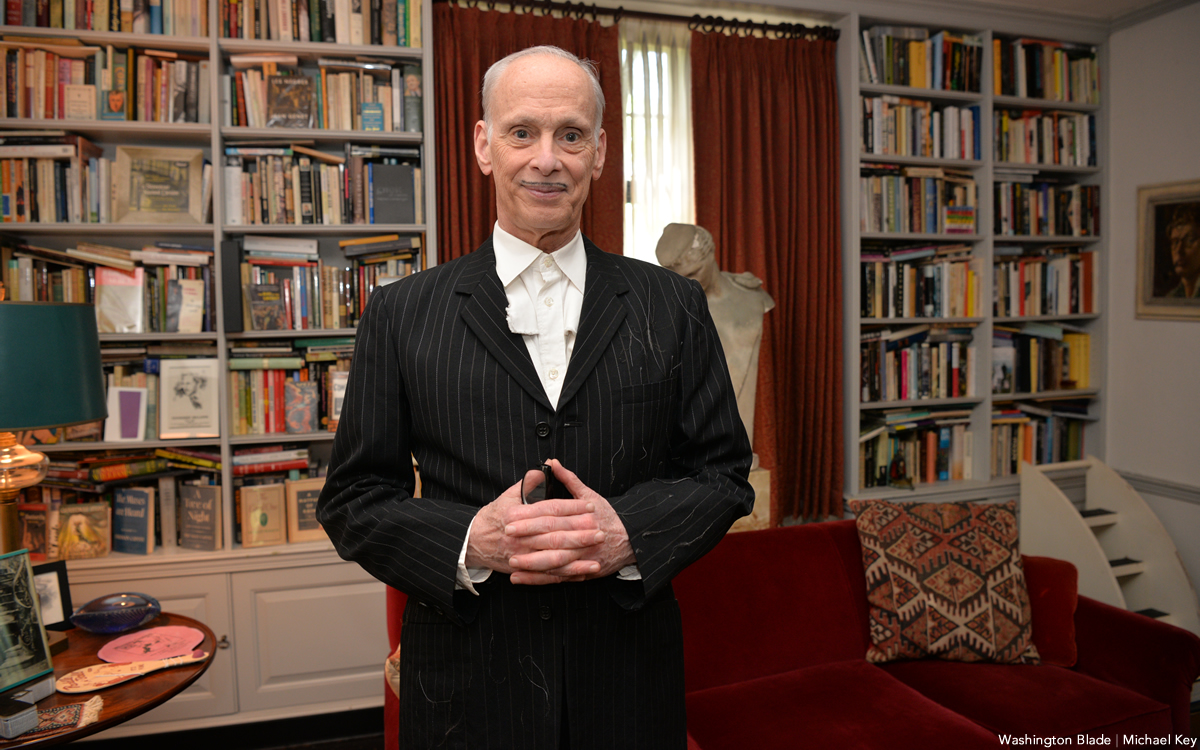
When it comes to iconic Christmas scenes in movies, none can top the tree-toppling tantrum thrown by cha-cha heels-deprived Dawn Davenport in John Waters’s fifth full-length feature “Female Trouble” from 1974. Therefore, it’s not surprising that Waters continues to make art out of Christmas, performing his spoken word Christmas tour in cities across the country. Waters has even more reason to celebrate with the release of his new red vinyl 7” single, a cover of Little Cindy’s “Happy Birthday Jesus (A Child’s Prayer)” on the A-side, and “A Pig Latin Visit From St. Nicholas” on the B-side. If you’re still looking for unique Christmas gifts, consider this record. As always, John was kind enough to make time for an interview in advance of his tour dates.
BLADE: John, in preparation for this interview with you, I went back and listened to Little Cindy’s original rendition of “Happy Birthday Jesus (A Child’s Prayer)” on your “A John Waters Christmas” CD.
JOHN WATERS: One thing I did, if you notice, I make the same stumble in my recording that she did in the original.
BLADE: It sounded to me like she got choked up.
WATERS: No, I think she just stumbles over a word, so I stumbled over the same word. It’s appropriation, insanely.
BLADE: Is this a song you first became aware of in your youth or when you were an adult?
WATERS: When I was doing the Christmas album, I had this friend named Larry Benicewicz. He was kind of my idea man with music. He knew every single old record. I would say to him, “Weird Christmas songs,” when we were doing a soundtrack, or a song about bears, or a song about this, and he would give me all these tapes. It was one of the ones he played for me. A lot of the songs I put in my movies and on my records, I did know as a kid. I did not know this one, but I immediately embraced it. I don’t think it’s campy. I think it really is spiritual in a weird way. My doing it makes it a novelty record. I am really for novelty records, and there aren’t any anymore. Why was there not a COVID novelty record? That’s insane. The dance “The Bug” that’s on the “Hairspray” soundtrack would be perfect for COVID.
BLADE: The thing that struck me was that for a Christmas song in the voice of a child, a kind of death pall hangs over it, with lines like, “If I was good you’d let me live with you” and “they nailed you to the cross, they wanted you to die.”
WATERS: All of it! When I see children at midnight mass kneeling in front of a nude man nailed to a cross, I feel like I’m at The Eagle! It is S&M, it’s creepy. I took the same cover (photo) from her record to parody and put my face on it. The same thing I did with The Singing Dogs last year when I covered (their version of) “Jingle Bells.” I’m really into novelty records. I love them and I’m trying to bring them back. I don’t expect anybody to ever play these records. Even The Singing Dogs one said on it, “Please do not play this record” [laughs]. And the flipside, the Pig Latin version, is almost impossible to listen to.
BLADE: I’m so glad you mentioned that. “A Pig Latin Visit From St. Nicholas” reminded me of the lost art of speaking in Pig Latin. I also recall watching the PBS series “Zoom” as an adolescent and learning to speak “ubbi dubbi,” a distant relative of Pig Latin. Do you think that the time is right for a Pig Latin or ubbi dubbi revival?
WATERS: Here’s the thing, I never could pick up any language, except Pig Latin. I’ve been in every foreign country. Foreign countries have given me money to learn to speak the language. I can never do it! But Pig Latin…my parents and other parents in the ‘50s spoke Pig Latin so kids couldn’t understand what they were saying. Then my mother taught it to me, and I used it. The hardest take to shoot in “Pink Flamingos” was not eating the dog shit. It was when the cast skipped, in one take, saying “E-way, are-yay e-they ilthiest-fay eople-pay in-hay e-they ole-hay ide-way orld-way.” We’re the filthiest people in the whole wide world in Pig Latin. We had to do so many takes so they could do it once without screwing it up. In “Polyester,” Edith (Massey) answers the phone, “ello-hay.” I did a photo piece where it was all subtitled in Pig Latin. Like “osebud-Ray” (from “Citizen Kane”) or in “Streetcar,” “ella-Stay!” [Laughs] All the iconic dialogue translated into Pig Latin. My assistant who helped me do it, had never heard of Pig Latin. She really got good at it because she lived in many foreign countries and can pick up languages. But it’s not that easy to do it correctly and read it. Your computer will translate into Pig Latin.
BLADE: AI understands Pig Latin?
WATERS: I guess that’s AI. It wasn’t 100% right, but it was close. I can speak it if I look at it, but just do a bit at a time. It was a challenge that no one would possibly care about or want to do.
BLADE: I think you pulled it off very well.
WATERS: If you want people to leave on Christmas morning, you put it on. That’s how you get your guests to leave. It’s time to go.
BLADE: Ood-gay i-bay! How did your relationship with record label Sub Pop, which released 2021, 2022, 2024, and new 2025 holiday singles, come about?
WATERS: I believe the first thing I did for them was “Prayer to Pasolini.” They came to me through Ian Brennan. He’s won a couple Grammys for World Music, but he is also is one of my agents who does the Christmas tour and a lot of my shows, anything with music. He helped me arrange each one of the songs. He had a relationship with Sub Pop. It was perfect. My friends in Baltimore, (the band) Beach House, have had huge success.
BLADE: That’s right, they’re on Sub Pop!
WATERS: Yes! I’m happy to be on it. I’ve even been to the warehouse and posed for pictures like Jackie Suzanne used to do.
BLADE: Is there any chance that “A John Waters Christmas” might be reissued on vinyl by Sub Pop?
WATERS: No. It’s such a nightmare to get the rights and to renew them. You have to find the publisher and the writer, and they usually hate each other. It doesn’t matter if it’s obscure or famous, it’s hard to get. You have to make the deal. The singer doesn’t get anything unless they play it on the radio. It would be so complicated legally, and there would be such a [laughs] tiny audience for it. I hope it will come out again. The same thing with the one for Valentine’s Day. I had two of them that did quite well when they came out; “A Date With John Waters and “A John Waters Christmas.” The “John Waters Christmas” album is still the soundtrack that plays whenever I’m doing my spoken word Christmas show as people are entering the theater.
BLADE: Aside from your annual Christmas show tour, what else do you do for the holidays now, and are there any traditions that you’ve carried over from your family?
WATERS: Certainly! I have two sisters, my brother’s widow, and me, so there are four and we take turns each year to have the Christmas dinner. Mine was last year. An entire sit-down dinner. Mom’s China, the silverware, the entire full dinner. It’s pretty traditional. I don’t have a Christmas tree, but I do decorate the electric chair from “Female Trouble.” That is a tradition in my family. We do have Christmas decorations, but they’re usually weird ones that fans sent me. I have one with Divine knocking over the Christmas tree, and the Christmas tree lights up, all sorts of amazing things. There is definitely a tradition here that might be a little altered, but it is definitely a tradition. I used to have a giant party every year, but COVID ended that. I still wouldn’t want 200 people in my house breathing right now.
BLADE: I was looking at your tour schedule and wondered if there are any new cities in which you’ve never performed the John Waters Christmas show that have been added to this year’s schedule?
WATERS: I don’t think there’s a city in America in which I haven’t done one show! The only places I haven’t been to are Hawaii and Alaska. I could do it there, but it’s too long on a tour. I can’t think of a city I haven’t played in in America over the last 50 years. The Christmas show is completely different every year. It doesn’t matter if you saw it last year.

Some gifts scream practical, others whisper luxury, and a few flat-out blur the lines. From cocoa that feels ceremonial to a cologne that linger like a suggestive smirk, this year’s ultimate gift picks prove that thoughtful (and occasionally naughty) presents don’t have to be prosaic. Welcome to your holiday cheat sheet for festive tangibles that get noticed, remembered, and maybe even result in a peck of gratitude planted under the mistletoe. Consensually, of course.
Amber Glass Champagne Flutes
Pop the champs – but make it vintage. These tulip-shaped stunners in amber-tinted glass bring all the Gatsby vibes without the Jazz-age drama. Whether you’re toasting a milestone or celebrating a Tuesday, their seven-ounce capacities and hand-wash-only care make ‘em as practical as they are pretty. Pair with a thoughtful bottle of bubs and gift with a glittering wink. $18, NantucketLooms.com
Disaster Playbook by Here Comes the Apocalypse
Because the end of the world shouldn’t be a solo act, this spiral-bound guide is your step-by-step roadmap to surviving and thriving when everything else goes sideways, which might be sooner than you think. Packed with checklists, drills, and a healthy dose of humor, it’s like a survival manual written by your most prepared (and slightly snarky) friend. Whether you’re prepping for a zombie apocalypse or, more realistically, REVOLUTION!, this playbook’s got your back. $40, HereComesTheApocalypse.com
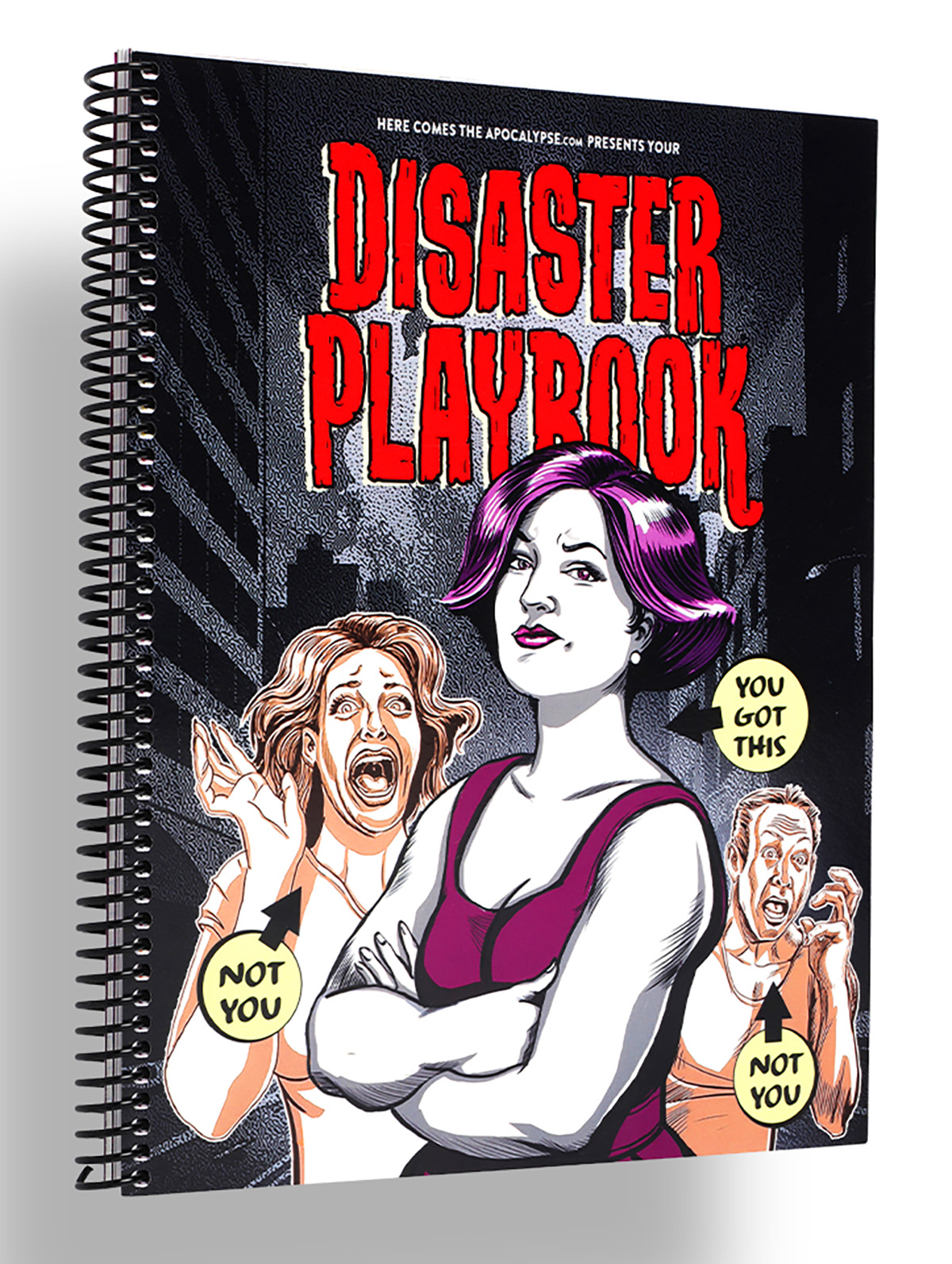
Wickless Vulva Candles
Bold, luxurious, and completely flame-free, CTOAN’s wickless candles melt from beneath on a warmer, releasing subtle, sophisticated fragrances, like sandalwood or lavender. The vulva-shaped wax adds a playful, provocative element to any space –perfect for a bedroom, living room, or anywhere you want elegance with an edge. A gift that celebrates form, intimacy and self-expression, no fire required. $39, CTOANCO.com
Villeroy & Boch Royal Classic Christmas Collection
Every meal is a mini celebration – with whimsy at every place setting – in Villeroy & Boch’s Royal Classic festive dinnerware collection that hits all the right notes. Made from premium German porcelain, it features nostalgic little toys, nutcrackers, and rocking horses in delicate relief, giving your holiday spread a playful but refined twist. Dishwasher- and microwave-safe, it’s luxe without the fuss. Gift a piece to a special someone, or start a collection they’ll use (and show off) for years to come. $22-$363, Villeroy-Boch.com
Greenworks Electric Lawnmower
You a ’hood queen who considers lawn care performance art – or just wants to rule the cul-de-sac in quiet, emission-free glory? Greenworks’ zero-turn electric mower has the muscle of a 24-horsepower gas engine but none of the fumes, drama or maintenance. Six 60V batteries and a 42-inch deck mean you can mow up to two-and-a-half acres on a single charge – then plug in, recharge, and ride again. It’s whisper-quiet, slope-ready, and smooth enough to make you wonder why you ever pushed anything besides your queer agenda. The perfect gift for the homeowner who loves sustainability, symmetry, and showing off their freshly striped yard like that fresh fade you get on Fridays. $5,000, GreenworksTools.com
Molekule Air Purifier
For the friend who treats their space like a sanctuary (or just can’t stand sneezes), the Molekule Air Pro is magic in motion. Covering up to 1,000 square feet, it doesn’t just capture allergens, VOCs, and smoke – it destroys them, leaving your air feeling luxury-clean. FDA-cleared as a Class II medical device, it’s serious science disguised as modern design. Gift it to your city-dwelling, pet-loving, candle-burning friend who likes their living room as pristine as their Instagram feed. $1,015, Molekule.com

Cipriani Prosecco Gift Set
Effervescent with stone-fruit sweetness and a touch of Italian flair, the Cipriani Bellini & Prosecco gift set brings brunch-level glamour to any day of the week. The Bellini blends rich white-peach purée with sparkling wine, while the dry ’secco keeps things crisp and celebratory. Pop a bottle, pour a flute, and suddenly winter weeknights feel like a party – even with your pants off. $36, TotalWine.com
Woo(e)d Cologne
British GQ recently crowned Woo(e)d by ALTAIA the “Best Date Night Fragrance,” and honestly, they nailed it. Confident without being cocky – smoky gaïac and Atlas cedarwood grounds the room while supple leather and spicy cardamom do all the flirting – it’s a scent that lingers like good conversation and soft candlelight. Gift it to the one who always turns heads – or keep it for yourself and let them come to (and then on) you. $255, BeautyHabit.com
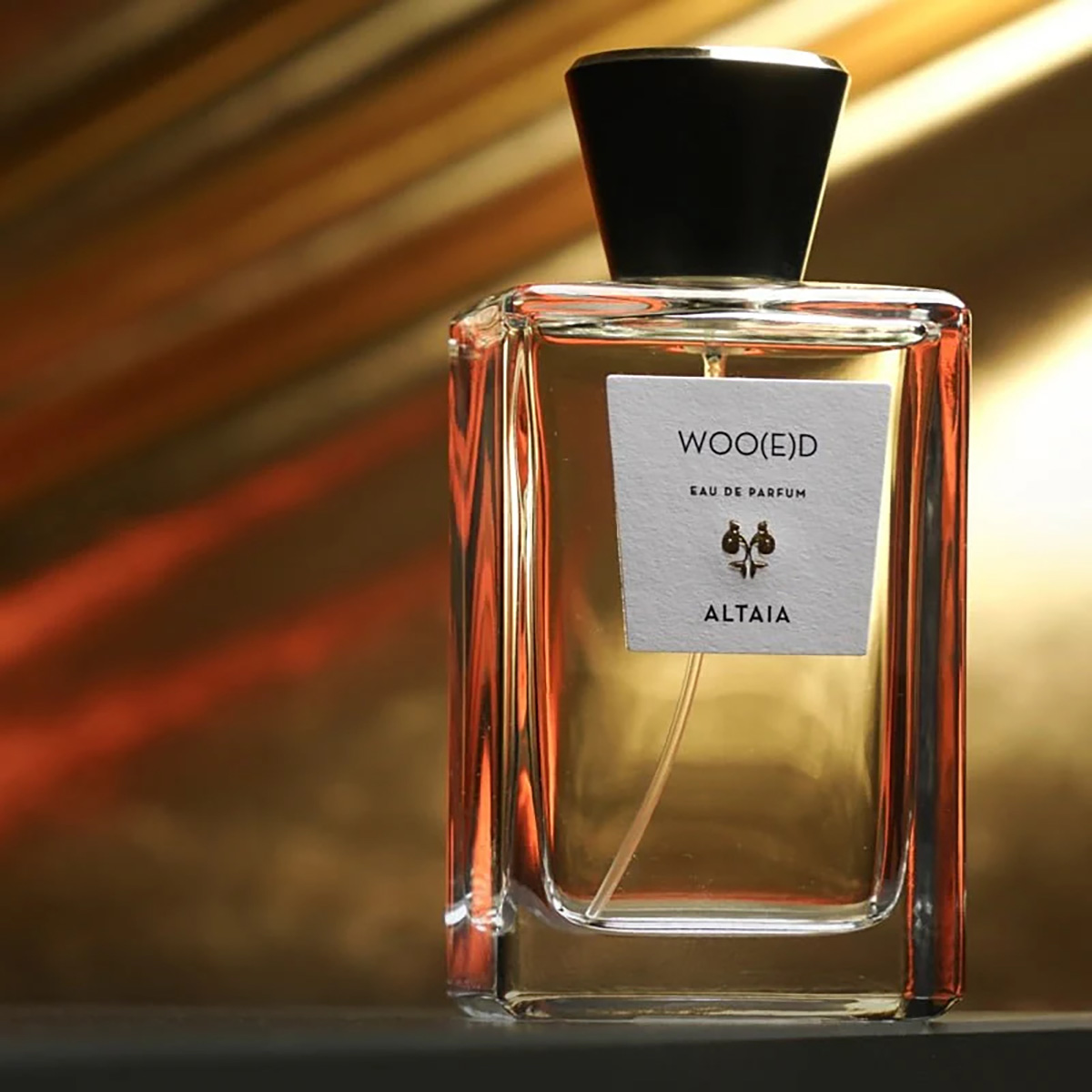
Lococo Cocoa Kit
Keep the run-of-the-mill mugs in the cabinet this Christmas and pull out Lococo’s handcrafted Oaxacan versions that demand you slow down and sip like it matters. Paired with a wooden scoop, rechargeable frother, and Lococo’s signature spice hot-chocolate blend (vegan, gluten-free, with adaptogenic mushrooms), this holiday kit turns Mexi-cocoa into a mini ritual you’ll look forward to. Perfect for anyone who loves a little indulgence with a side of ¡A huevo! energy.
Manta Sleep Mask
Total blackout, zero pressure on the eyes, and Bluetooth speakers built right into the straps, this ain’t your mama’s sleep mask — but it could be. The Manta SOUND sleep mask features C-shaped eye cups that block every hint of light while ultra-thin speakers deliver your favorite white noise, meditation, or late-night playlist straight to your ears. With 24-hour battery life, breathable fabric, and easy-to-adjust sound, it turns any bed (or airplane seat) into a five-star sleep suite. Perfect for anyone who treats shut-eye like an art form (or just wants to escape their roommate’s late-night bingin’ and/or bangin’). $159, MantaSleep.com

Shacklelock Necklace
Turn the industrial-chic vibe of a shackle into a sleek statement. Mi Tesoro’s platinum-plated stainless-steel necklace sits on an 18-inch wheat chain, featuring a shackle-style latch pendant that’s waterproof, tarnish-free, and totally fuss-les. Beyond style, it nods to a classic gesture in the queer leather community: replacing a traditional Master lock with something elegant to quietly signal belonging to someone special. Wear it solo for a minimalist edge or layer it like you mean it; either way this piece locks in both your look and your intentions. $90, MiTesoroJewelry.com
Parkside Flask Mojave Edition
Wine nights get a desert glow-up with Parkside’s limited-edition 750-milliliter all-in-one flask draped in sun-washed bronze and badland hues like sage, sand, and terracotta – with magnetic stemless tumblers that snap on for effortless shareability. It keeps your vino chilled for 24 hours, pours without drips (no tears for spilled rosé, please), and even lets you laser-engrave your own mantra or inside joke. Perfect for picnics, surprise rooftop clinks, or gifting to your favorite wine (or desert) rat. $149, HighCampFlasks.com

Mikey Rox is an award-winning journalist and LGBT lifestyle expert whose work has published in more than 100 outlets across the world. Connect with him on Instagram @mikeyroxtravels.
a&e features
Meet Mr. Christmas
Hallmark’s Jonathan Bennett on telling gay love stories for mainstream audiences
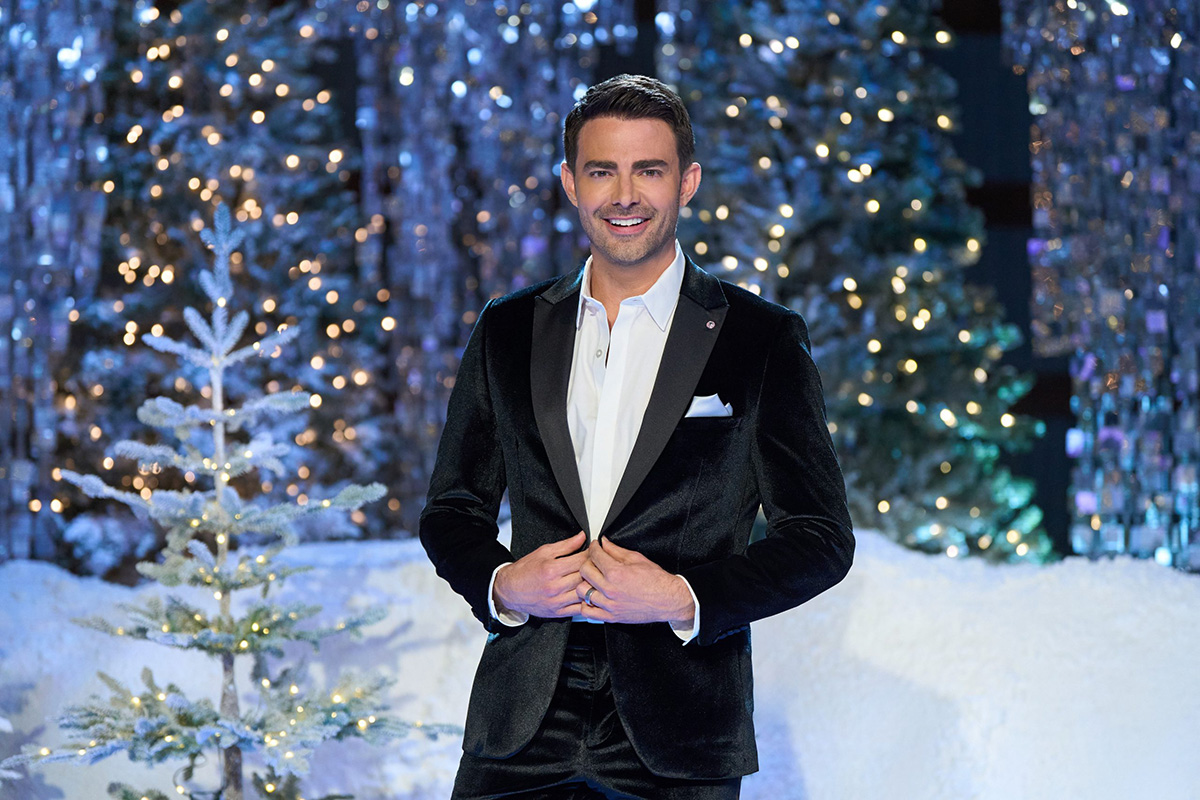
Jonathan Bennett believes there are two kinds of people in the world — those who love Hallmark movies and liars. And in Season 2 of Finding Mr. Christmas, which the Mean Girls star co-created with Ben Roy, Bennett is searching for Hallmark’s next leading man.
“It’s so fun for people because everyone in their life has someone they know that they think should be in Hallmark movies, right? The UPS driver, the barista at the coffee shop, the dentist,” Bennett says. “So we’re testing their acting abilities, we’re testing who they are, but we’re also looking for that star quality — the thing that makes them shine above everyone else. It’s almost something you can’t explain, but we know it when we see it.”
Season 2’s cast includes a former NFL player for the Green Bay Packers, a few actors, and a realtor. The 10 men compete in weekly festive-themed acting challenges, one of which included having to ride a horse and act out a scene with Alison Sweeney. The contestants were chosen from a crop of 360 potential men, and Bennett gives kudos to the show’s Emmy-nominated casting director, Lindsay Liles (The Bachelor, Bachelor in Paradise).
“She has a tough job because she has to find 10 guys that are going to be good reality television, but also have the talent to act, carry a scene, and lead a Hallmark movie eventually,” he says. To be the right fit for a Hallmark leading man, Bennett singles out five key characteristics: you have to be funny, charming, kind, have a sense of humor, and you have to do it all with a big heart.
Of course, Finding Mr. Christmas wouldn’t be Finding Mr. Christmas without its signature eye candy — something Bennett describes as “part of the job” for the contestants. “I can’t believe Hallmark let me get away with this. I dressed them as sexy reindeer and put them in harnesses attached to a cable 30 feet in the air, and they had to do a sexy reindeer photo shoot challenge,” he says with a laugh. “This season is just bigger and bolder than last. People are responding to not only all the craziness that we put them through, but also comparing and contrasting the guys in their acting scenes when we do them back-to-back.”
Season 1 winner Ezra Moreland’s career has been an early testament to the show’s success at finding rising talent. On seeing the show’s first winner flourish, Bennett says, “Now to watch him out in the world, just booking commercial after commercial and shining as an actor and a model, I think the show gave him the wings to do that. He learned so much about himself, and he took all that into his future auditions and casting. He just works nonstop. I’ve never seen an actor book more commercials and modeling gigs in my life.”
Bennett has been a star of plenty of Hallmark movies himself, including the GLAAD-award-winning The Groomsmen: Second Chances, which makes him a fitting host. Among those movies are 2020’s Christmas House, which featured the first same-sex kiss on the network and had a major impact on Bennett’s career as an openly gay man. “Hallmark’s been so great about supporting me in queer storytelling. But again, I don’t make gay movies for gay audiences. I make gay love stories for a broad audience, and that’s a huge difference, right? We’re not telling stories inside baseball that only the gay community will understand.”
He continues, “The backdrop of a Hallmark Christmas movie is very familiar to these people who watch. And so when you tell a gay love story, and you tell it no differently than a straight love story in that space, they’re able to understand. It’s able to change hearts and minds for people who might not have it in their lives.”
While Hallmark has become a major staple of Bennett’s career, he started off wanting to be a Broadway actor. And before the first season of Finding Mr. Christmas aired, Bennett took a break from TV to make his Broadway debut in Spamalot, replacing Michael Urie as Sir Robin and starring alongside Ethan Slater and Alex Brightman.
“That was my dream since I was five years old – then I booked a movie called Mean Girls, and everything kind of changes in your life. You no longer become a person pursuing Broadway, you become a part of pop culture,” Bennett recalls. “And to be honest, when I hit 40, I was like, ‘I’m probably never going to get to live that dream.’ And that’s okay, because I got to do other dreams and other things that were just as cool but different. So I honestly never thought it would happen.”
Bennett is still determined to make his way back on Broadway with the right role — he calls Spamalot the “best experience” of his life, after all — but he’s got another Hallmark show lined up with Murder Mystery House, which he co-created. The show was recently greenlit for development and intends to bring the Hallmark mystery movie to life. “It’s kind of like our version of The Traitors,” Bennett admits.
Looking back on both seasons, Bennett says that what makes Finding Mr. Christmas stand out in the overcrowded reality TV landscape is that everyone involved makes it with heart: “This isn’t a show where you’re going to watch people throw drinks in each other’s faces and get into big fights. The thing that has amazed me so much about this show, the more we’ve done it, is that every season, 10 guys come in as competitors, but they leave as a family and as brothers. That’s something you don’t get on any other network.”
Finding Mr. Christmas airs every Monday on Hallmark through December 20, with episodes available to stream on Hallmark+.

